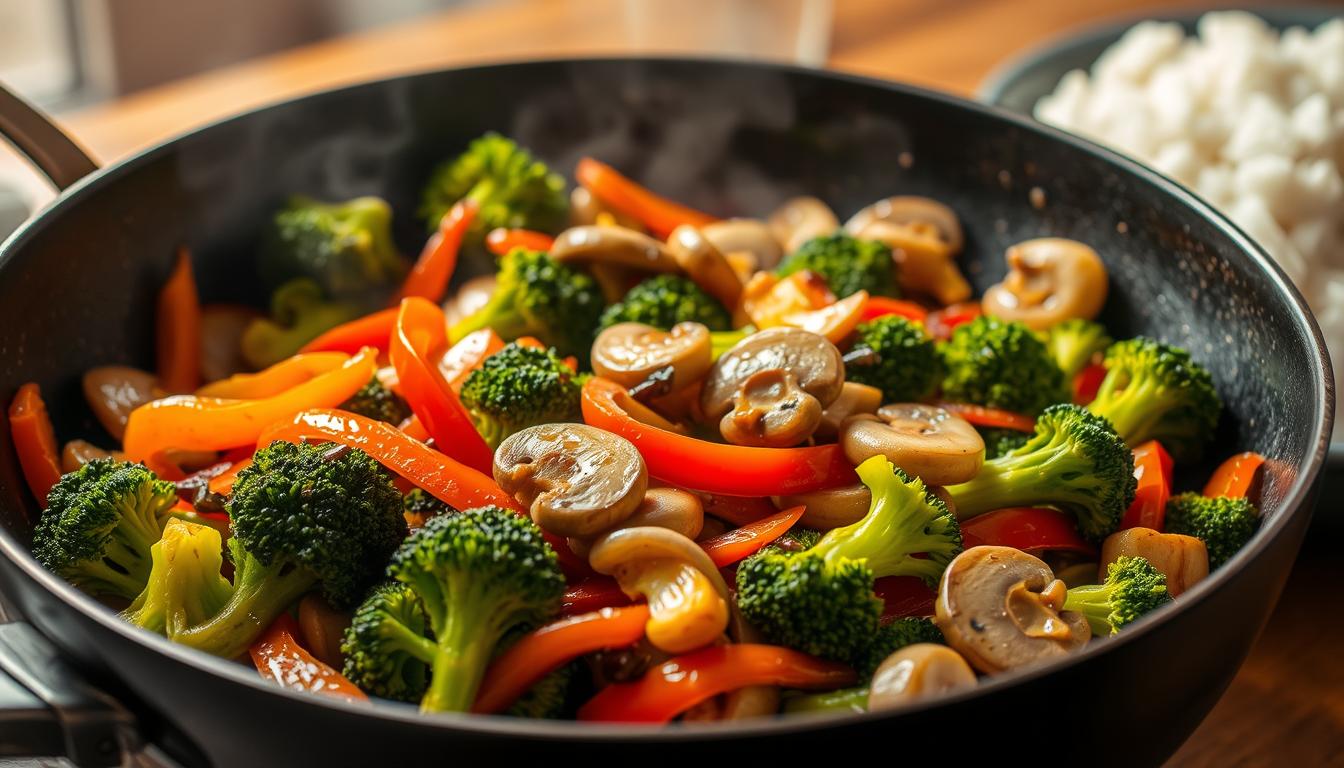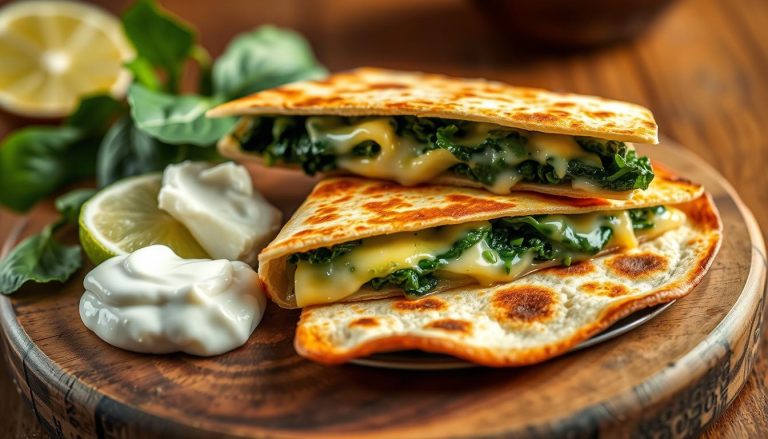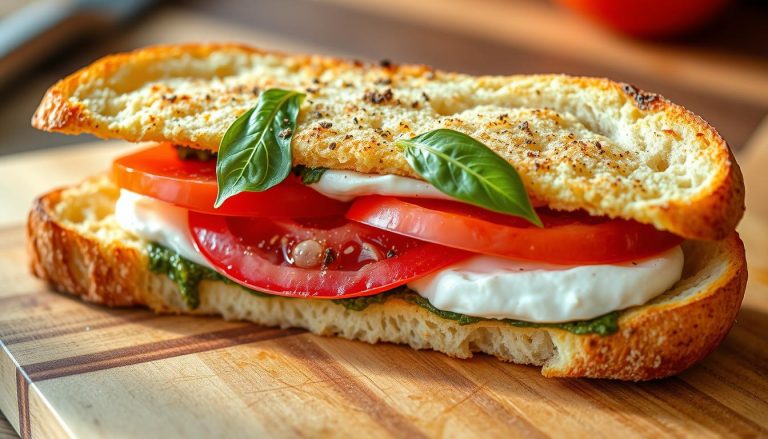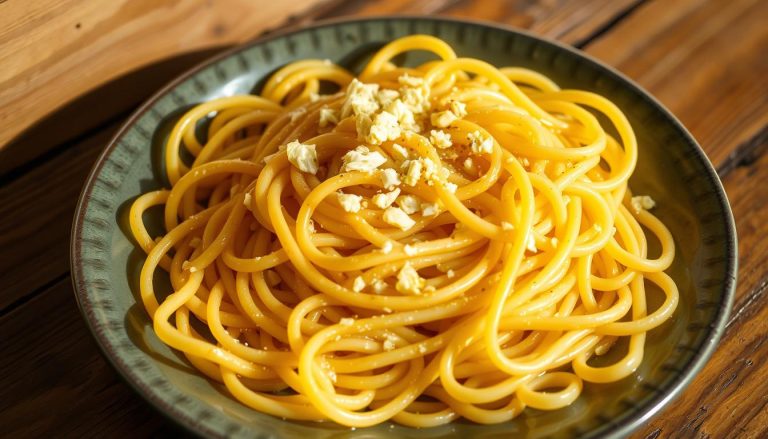Delicious Speedy Veggie Stir-Fry in Just 15 Minutes
Looking for a quick, healthy meal that’s ready in no time? This easy vegetable stir recipe is perfect for busy weeknights. Packed with fresh vegetables and a flavorful homemade sauce, it’s a dish that’s both nutritious and satisfying.
What makes this recipe stand out is its flexibility. You can customize it with your favorite veggies or add proteins like tofu, chicken, or shrimp for a heartier meal. The best part? It takes just 15 minutes from start to finish, making it ideal for those hectic evenings.
This guide will walk you through every step, from selecting the freshest ingredients to serving up a delicious plate. Whether you’re a seasoned cook or a beginner, this stir fry is simple enough for anyone to master. Let’s dive in and create a meal that’s as quick as it is tasty!
Key Takeaways
- Prepare a healthy and flavorful meal in just 15 minutes.
- Customize the recipe with your favorite vegetables and proteins.
- Enjoy a balanced mix of fresh ingredients and a robust homemade sauce.
- Perfect for busy weeknights or last-minute dinners.
- Follow simple steps to make cooking accessible for everyone.
Essential Ingredients and Preparation
The secret to a flavorful dish lies in its ingredients. Fresh, high-quality components not only enhance taste but also ensure a nutritious meal. Whether you’re using vibrant vegetables or adding proteins, each ingredient plays a crucial role in creating a balanced and satisfying dish.
Fresh Vegetables and Proteins
Start with a mix of colorful vegetables like red and yellow bell peppers, crisp broccoli, and tender baby corn. These add both texture and flavor to your dish. Mushrooms and water chestnuts can also be included for extra depth.
For proteins, options like chicken, tofu, or shrimp work beautifully. Each brings its unique taste and texture, allowing you to customize the recipe to your liking. The key is to ensure all ingredients are fresh and prepped properly for the best results.
Savory Sauce Components
The sauce is what ties everything together. A combination of soy sauce, minced garlic, and a hint of brown sugar creates a rich, savory flavor. Add cornstarch for thickness and sesame oil for a nutty aroma.
Proper measuring and mixing are essential to achieve the perfect balance. A well-prepared sauce enhances the natural flavors of the vegetables and proteins, making every bite irresistible.
Step-by-Step Cooking Process
Ready to whip up a delicious dish in minutes? Follow these simple steps to create a flavorful meal that’s as easy as it is satisfying. The key lies in proper preparation and cooking techniques.

Prepping and Cutting Vegetables
Start by washing and peeling your vegetables. Cut them into uniform pieces to ensure even cooking. For example, slice bell peppers into thin strips and chop broccoli into bite-sized florets.
Uniformity is crucial. It helps all ingredients cook at the same rate, preventing some from becoming too soft while others remain undercooked. Take your time with this step—it sets the foundation for a great dish.
Stir-Frying in a Wok or Skillet
Pre-heat your skillet or wok over high heat. Add a tablespoon of oil and let it heat until it shimmers. This ensures your vegetables will cook quickly and retain their crisp texture.
Add the vegetables in stages, starting with those that take longer to cook, like broccoli and carrots. Stir constantly for 2-3 minutes, then add quicker-cooking veggies like peppers and mushrooms.
Keep an eye on the cook minute for each ingredient. Overcooking can lead to soggy vegetables, so aim for a crisp-tender texture. A well-timed stir fry is the secret to a perfect dish.
Mastering the Stir Fry Technique
Mastering the art of stir-frying starts with understanding the right techniques. Traditional Chinese cooking emphasizes the importance of high heat and quick cooking to preserve the texture and flavor of ingredients. Modern adaptations have made these methods accessible to home cooks, allowing anyone to create restaurant-quality meals.
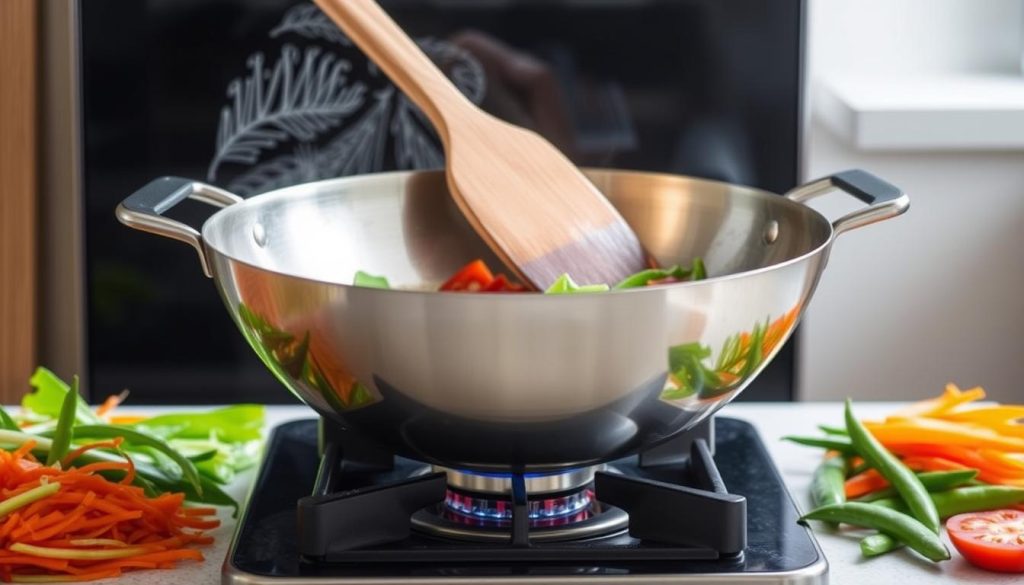
Why High Heat is Essential
Using high heat is crucial for stir-frying. It sears vegetables quickly, locking in their natural juices and preventing them from becoming soggy. This method also enhances the flavor of proteins, giving them a delicious caramelized exterior.
To achieve the best results, preheat your wok or skillet until it’s smoking hot. This ensures that ingredients cook evenly and retain their crisp texture. Remember, the right heat level is the foundation of a perfect stir fry.
Quick Cooking Tips
Here are some practical tips to elevate your stir-fry game:
- Add ingredients in small batches to avoid overcrowding the pan.
- Stir continuously to prevent burning and ensure even cooking.
- Incorporate fresh ginger for a zesty, aromatic kick.
- Finish with a drizzle of sesame oil for a rich, nutty flavor.
“The secret to a great stir fry is speed and precision. High heat and quick cooking are non-negotiable.”
Enhancing Flavor with Ginger and Sesame Oil
Fresh ginger adds depth and complexity to your sauce. Its sharp, slightly spicy flavor pairs beautifully with savory ingredients. For an extra layer of richness, a small amount of sesame oil added at the end of cooking can transform your dish.
| Technique | Benefit |
|---|---|
| High Heat | Sears ingredients quickly, preserving texture and flavor. |
| Fresh Ginger | Adds aromatic complexity to the sauce. |
| Sesame Oil | Enhances richness and provides a nutty finish. |
By mastering these techniques, you can turn a simple stir fry into a gourmet experience. Practice makes perfect, so don’t be afraid to experiment and refine your skills.
Helpful Tips for Your Speedy Veggie Stir-Fry
Balancing flavors and textures is the key to a standout meal. A perfectly executed vegetable stir fry combines crisp-tender vegetables with a harmonious blend of sweet and savory elements. Here’s how to achieve that balance every time.
Strategies for Crisp-Tender Vegetables
Start by cutting your vegetables uniformly. For example, slice carrots into thin rounds and chop onions into even pieces. This ensures they cook evenly and retain their texture.
Add vegetables to the pan in stages. Begin with harder veggies like carrots and broccoli, then add softer ones like mushrooms and peppers later. This prevents overcooking and maintains their natural crunch.
Balancing Sweet and Savory Flavors
A touch of brown sugar in the sauce can balance the saltiness of soy sauce, adding a subtle sweetness. Combine it with garlic and ginger for a rich, layered flavor profile.
For an extra crunch, sprinkle toasted sesame seeds over the dish before serving. They add texture and a nutty flavor without overpowering the other ingredients.
Practical Tips for Perfect Results
- Cook over high heat to lock in the vegetables’ natural juices.
- Stir constantly to ensure even cooking and prevent burning.
- Experiment with the sauce ingredients to find your ideal balance of flavors.
- Garnish with fresh herbs or a drizzle of sesame oil for added depth.
| Ingredient | Role |
|---|---|
| Carrot | Adds sweetness and crunch. |
| Onion | Provides a savory base flavor. |
| Mushroom | Enhances umami and texture. |
| Sesame Seed | Offers a nutty crunch as garnish. |
| Brown Sugar | Balances saltiness with sweetness. |
With these tips, you can create a vegetable stir fry that’s both nutritious and satisfying. Don’t be afraid to tweak the recipe to suit your taste—every small adjustment brings you closer to perfection.
Creating the Perfect Stir Fry Sauce
The heart of any great stir fry lies in its sauce. A well-balanced blend of flavors can elevate your dish from ordinary to extraordinary. Whether you prefer sweet, savory, or a mix of both, mastering the sauce is essential for a memorable meal.
Mixing and Adjusting Flavors
Start by whisking together 3 tablespoons of soy sauce, 2 tablespoons of water, and 1 tablespoon of brown sugar. This creates a base that’s both savory and slightly sweet. Add 1 teaspoon of minced garlic and a pinch of fresh ginger for depth.
To thicken the sauce, mix 1 tablespoon of cornstarch with 2 tablespoons of water until smooth. Stir this into the sauce while cooking. The cornstarch helps achieve a glossy, thick consistency that clings to the ingredients.
Taste and adjust as needed. If it’s too salty, add a bit more sugar. For extra richness, a splash of sesame oil works wonders. The key is to balance the flavors to suit your palate.
Storing and Reusing Your Sauce
Leftover sauce can be stored in an airtight container in the fridge for up to 3 days. For longer storage, freeze it in small portions. This makes it easy to grab and use for future meals.
When reheating, add a splash of water to restore the sauce’s consistency. Stir well to ensure it’s smooth and ready to use. A well-made sauce can save time and enhance multiple dishes.
“A great sauce is the soul of a stir fry. It ties all the ingredients together and brings harmony to every bite.”
| Ingredient | Role |
|---|---|
| Soy Sauce | Provides savory umami flavor. |
| Brown Sugar | Adds sweetness to balance saltiness. |
| Cornstarch | Thickens the sauce for better coating. |
| Water | Helps dissolve and blend ingredients. |
Mastering the sauce is the secret to a standout stir fry recipe. With these tips, you’ll create a dish that’s flavorful, balanced, and unforgettable.
Serving Suggestions and Meal Prep Ideas
Transform your quick meal into a versatile feast with these serving and meal prep ideas. Whether you’re looking for a simple dinner or a dish that can last all week, these tips will help you make the most of your vegetable stir.
Serving Over Rice or Noodles
One of the easiest ways to enjoy your dish is by serving it over a base. Steamed rice, whether white or brown, complements the flavors perfectly. For a lighter option, try noodles or even zoodles (zucchini noodles).
Add a sprinkle of toasted sesame seeds and fresh scallions for extra flavor and texture. These garnishes not only enhance the taste but also make your meal visually appealing.
Meal Prepping for Busy Weeknights
Preparing meals in advance can save you time on hectic days. Cook a large batch of your vegetable stir and store it in the fridge for up to 5 days. This makes it easy to grab a quick lunch or dinner throughout the week.
Consider making extra sauce and storing it separately. This allows you to adjust the flavor when reheating. For heartier meals, add proteins like chicken, tofu, or shrimp to your prepped portions.
| Serving Option | Benefits |
|---|---|
| Rice | Adds a filling base and absorbs the sauce well. |
| Noodles | Offers a lighter alternative with a satisfying texture. |
| Zoodles | Provides a low-carb, nutrient-rich option. |
Experiment with different combinations to find what works best for you. The key is to keep your meals balanced, nutritious, and delicious.
Conclusion
Cooking a flavorful meal doesn’t have to be complicated or time-consuming. This fry recipe is proof that simplicity can lead to delicious results. With fresh ingredients like bell peppers, baby corn, and a hint of garlic clove, you can create a dish that’s both healthy and satisfying.
The recipe’s versatility allows you to customize it to your taste. Swap in your favorite veggies or add proteins for a heartier meal. The sauce, with its blend of savory and sweet flavors, ties everything together perfectly.
Remember, high heat and quick cooking are key to preserving the crisp texture of your vegetables. Don’t be afraid to experiment with variations—this recipe is a great foundation to build on.
We’d love to hear about your creations! Share your versions and feedback with us. With a few simple steps, even beginners can master this dish and enjoy a restaurant-quality meal at home.
FAQ
What vegetables work best in a stir fry?
Broccoli, bell peppers, carrots, mushrooms, and baby corn are great choices. They stay crisp and add vibrant color to your dish.
Can I make the stir fry sauce ahead of time?
Absolutely! Mix soy sauce, sesame oil, brown sugar, and cornstarch in a jar. Store it in the fridge for up to a week. Shake well before using.
How do I keep my vegetables crisp-tender?
Cook on high heat and stir constantly. Avoid overcrowding the skillet to ensure even cooking and a perfect texture.
What protein can I add to my stir fry?
Tofu, chicken, shrimp, or beef are excellent options. Cook them separately before adding to the vegetables for the best results.
Can I use a regular skillet instead of a wok?
Yes, a large skillet works well. Just make sure it’s heated properly to achieve that signature stir fry flavor.
How can I adjust the sauce to my taste?
Add more garlic or ginger for extra flavor. If you like it sweeter, increase the brown sugar. For a tangy twist, a splash of rice vinegar works wonders.
What’s the best way to serve stir fry?
Serve it over rice or noodles for a complete meal. Garnish with sesame seeds or chopped green onions for added flair.
Can I meal prep stir fry for the week?
Definitely! Cook the vegetables and protein separately. Store them in airtight containers and reheat with the sauce when ready to eat.

